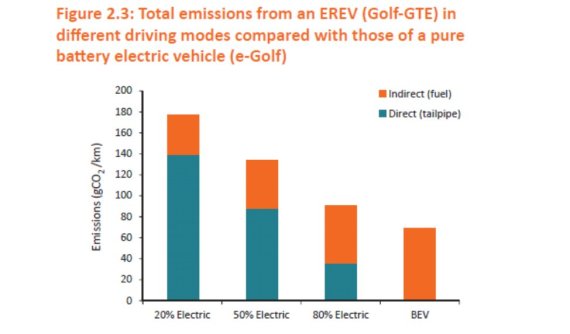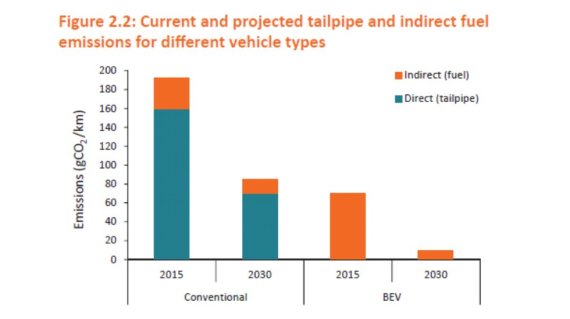This morning’s newspapers are filled with the story that Volvo is to go ‘all electric’ from 2019 – focusing on Battery Electric Vehicles, Plug-in Hybrids, and so-called ‘mild hybrids’, and ending sales of cars with only a combustion engine.
Does this signal ‘the death knell’ for diesels, the ‘end of the road’ for the combustion engine, and the ‘historic end’ of gas guzzlers?
Well, yes and no…
Will we really see the back of the combustion engine? Are electric cars really clean?
Beyond the hype, it is worth clarifying first that Volvo will in fact continue to sell cars with a combustion engine, and cars that produce greenhouse gas emissions.
‘Mild hybrids’ are cars with a smallish battery and an electric motor capable of powering the vehicle over short distances and/or providing a temporary boost alongside the engine. The battery is charged solely by the internal combustion engine, which means that mild hybrids still use petrol or diesel as their only fuel. Hybridisation of this sort is an important step forward, but is largely about improving the efficiency of fossil fuel use.
Plug in Hybrids (or ‘PHEVs’) are a further step towards full electrification. Unlike mild hybrids, PHEVs can also be charged directly from the mains. PHEVs should in principle have lower carbon emissions than conventional vehicles. However, as discussed in a recent Policy Exchange report, Driving Down Emissions, in practice the relative emissions from PHEVs vary considerably depending on usage patterns, the size of the battery, and how often they are charged. If PHEVs are charged rarely and used mainly for longer journeys, they may be no better than conventional vehicles in terms of efficiency or emissions (in fact they can be worse).

On the other hand, Battery Electric Vehicles (BEVs) already have much lower emissions than conventional cars. One of the criticisms levelled at BEVs is that the emissions are simply moved from the tailpipe to the power station. Whilst this is true to an extent, the ‘indirect’ emissions associated with the power used in a BEV are lower than the direct tailpipe emissions in a conventional car. This difference will only increase as the power system is decarbonised.

When will we see mass adoption of electric cars? When will they become the default option for motorists?
Here the signs are promising, although there is still some way to go. BEV cars and vans are already cheaper to buy and run than conventional cars (based on total cost of ownership). But this is in part due to the fact that they are eligible for significant grants from the Government.

Looking forward, BEVs and PHEVs are expected to become cost-competitive with conventional cars without grants by the early 2020s. Indeed, the Government needs to be careful not to over-subsidise the technology, and should signal a withdrawal of grants by around 2020.

What about trucks and buses?
Whilst electric is quickly becoming a viable and affordable option for cars and small vans, the same cannot yet be said about larger vans, trucks and buses. It is difficult to apply battery-only technology to double decker buses and HGVs due to the huge batteries that would be required, and the long charging time.
For this reason, technology developers are also looking at alternatives such as hydrogen fuel cells, which have a far greater energy density than electric batteries. One company is developing a hydrogen powered HGV that could travel 1,200 miles without refuelling. The challenge with fuel cell vehicles is how to produce, transport and distribute large volumes of low carbon hydrogen.
Another alternative is to move to natural gas fuels such as LPG. This is commonly used in the US and Europe, but relatively uncommon in the UK despite the existing network of 1,400 LPG refuelling stations. LPG can deliver a significant reduction in local air pollutants (NOx and particulates) but offers little or no savings in greenhouse gas emissions (unless the gas is produced from wastes or renewable sources).
‘I’m afraid to tell you there’s no money left’
One final thing to consider is the fiscal impact of this shift. The Government currently raises around £28billion through duties on petrol and diesel. Long-term forecasts by the Office for Budgetary Responsibility assume that this will increase to around £40billion by 2030.
However, as we move from conventional vehicles to low carbon alternatives, fuel duty receipts could fall. Policy Exchange analysis shows that if we achieve the carbon trajectory suggested by the Committee on Climate Change, fuel duty receipts could fall to as low as £17billion in 2030, or £23billion lower than the OBR is suggesting. The Government has seemingly failed to recognise the pace and extent of this change.

— This feed and its contents are the property of The Huffington Post UK, and use is subject to our terms. It may be used for personal consumption, but may not be distributed on a website.